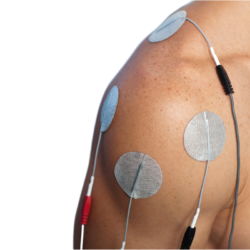Doliprane, often the first response to pain, is a widely-used paracetamol-containing medicine. But how effective is it for headaches, fevers and even social pain? This article looks at its uses and limitations, and explores the natural alternatives available from online pharmacies.
[ Warning: The information in this blog post is provided for general information purposes only and does not represent professional medical advice. Any decision regarding the use of the treatments discussed in this article should be made in consultation with a qualified healthcare professional. The information presented here is based on knowledge available up to the date of publication and may not reflect the latest scientific advances. It is always necessary to consult a doctor or other qualified healthcare professional before starting, modifying or interrupting any medical treatment. Under no circumstances should you use the information contained in this article to diagnose or treat a medical condition. ]
What is Doliprane used for?
Doliprane, famous for its active ingredient paracetamol, is an essential medication for treating pain and fever. It comes in various forms and doses, including Doliprane 500 and Doliprane 1000, suitable for different age groups and therapeutic needs.
What is paracetamol?
Paracetamol is the main active substance in Doliprane, renowned for its effectiveness in reducing headaches, muscle aches and dental pain. It works by modulating pain signals in the central nervous system and influencing the temperature regulation centres in the brain. Hence its common use to relieve pain and reduce fever.
What are the contraindications, side effects and precautions to be taken?
Despite its wide use, Doliprane is not free from contraindications. It is advisable to avoid using this product in cases of serious liver disease, inflammation or bleeding of the rectum. These recommendations apply in particular to suppositories. Particular care should be taken when taking several medicines containing paracetamol at the same time, to avoid the risk of overdosing, which can be toxic to the liver.
Caution should also be exercised in cases of chronic alcoholism, malnutrition, fasting, recent weight loss, anorexia, renal failure or liver disease. Patients should limit their intake of paracetamol to a few days without medical advice, and should not exceed the recommended doses.
Undesirable effects of Doliprane may include skin reactions and allergies. In very rare cases, serious reactions may also occur, requiring treatment to be discontinued. Disorders such as bronchospasm, diarrhoea, abdominal pain or an increase in transaminases may also occur.
Drug interactions
Doliprane may interact with certain drugs, particularly antibiotics containing flucloxacillin. In addition, Doliprane needs to be monitored more closely when taken in combination with oral anticoagulants. It is important to inform healthcare professionals of any medication that may affect the liver or induce liver enzymes.
Pregnancy, breast-feeding and Doliprane
Current studies have not revealed any major risks associated with the use of paracetamol during pregnancy and breast-feeding. Provided it is taken at the lowest possible dose and for the shortest possible duration. During breast-feeding, the usual doses of this medicine are considered safe.
How much Doliprane can I take in a day?
Doliprane can be taken with or between meals. The interval between doses must be respected, especially in cases of kidney failure. Adults and children weighing over 50 kg should take the 1000 mg form. It is important to choose a form suitable for young children to avoid the risk of choking.
| Weight | (Approximate age) | Maximum dose per dose | Interval between two doses | Maximum dose per day |
|---|---|---|---|---|
| Adults and children over 50 kg | (approximately 15 years of age) | 1000 mg or 1 g (1 tablet) | 4 hours minimum | 3000 mg per day, i.e. 3 g (3 tablets) |
Doliprane: Beyond physical pain
Social pain is a profound emotional experience, often experienced when people are rejected or isolated. It can be as intense as physical pain, with a significant impact on quality of life. Specific regions of the brain, such as the anterior cingulate cortex and the insula, show activity associated with this pain, as they are also called upon during physical pain.
Paracetamol: Mechanism of action on social pain
Paracetamol, the active ingredient in Doliprane, acts at the central level of the nervous system. It modifies the perception of pain by interfering with neuronal pathways. This action on the brain could explain why paracetamol reduces not only physical pain but also social pain.
Research has shown that paracetamol may reduce the behavioural and neuronal responses associated with social pain. Participants taking paracetamol reported a reduction in their social pain, and MRI scans showed reduced activity in brain regions linked to this pain.
Implications and outlook
These findings open up exciting prospects for the treatment of social pain. They highlight the potential of paracetamol, not only as a physical analgesic, but also as a means of relieving the deep emotional pain associated with rejection and social isolation.
Impact of Paracetamol on empathy
Another study has highlighted an unexpected effect of paracetamol, known for its action as an analgesic: its ability to reduce empathy for the pain of others. The researchers discovered that paracetamol consumption can reduce our ability to feel empathy for the suffering of others. These results suggest that paracetamol, over and above its role in managing physical pain, could influence our emotional and social reactions. This discovery raises important questions about the wider effects of acetaminophen on human behaviour and social interaction.
Long-term impact of Doliprane use
Researchers have published a study on the long-term effects of taking paracetamol in the journal “Annals of the Rheumatic Diseases”. The article, entitled“Paracetamol: not as safe as we thought? A systematic literature review of observational studies” by Emmert Roberts et al (2015) examined the association between long-term paracetamol consumption and an increased risk of mortality, cardiovascular, gastrointestinal and renal disorders.
The results of this study show a significant dose-response relationship, indicating that as the daily dose of paracetamol increases, so does the risk of these adverse effects. Two of the eight studies examined focused on mortality, four on cardiovascular effects, one on gastrointestinal disorders, and four others noted renal incidents.
Public health considerations
These findings highlight a major public health issue. It is crucial to use paracetamol in a prudent and informed manner. This becomes particularly important when the drug is taken over a long period. Health professionals must also take action. They should encourage their patients to talk about their paracetamol use. As a consumer, you must also ensure that you take the prescribed doses.
What are the natural alternatives to Doliprane?
The search for natural solutions to manage pain and inflammation is on the increase. This has led to a growing interest in natural substances. These include turmeric, PEA (palmitoylethanolamide), serrapeptase and Boswellia. Here is an overview of their properties and efficacy based on recent studies.
Turmeric
Turmeric, which is particularly rich in curcumin, is renowned for its anti-inflammatory properties. Curcumin has shown positive effects in pain management. Particularly in cases of arthritis or muscular pain. Its action could be comparable to that of certain anti-inflammatory drugs, but without the side effects associated with traditional medicines.
Palmitoylethanolamide (PEA)
PEA is a natural compound found in the human body. It plays an important role in the response to pain and inflammation. Research indicates that PEA supplementation can help reduce chronic pain. This includes conditions such as fibromyalgia and neuropathic pain. It is generally well tolerated by most users.
Boswellia
Also known as ‘frankincense’, has been extensively studied for its therapeutic properties. Here is a summary of recent research into its efficacy and potential use in various health conditions:
- Treatment of Osteoarthritis: Clinical studies have evaluated Boswellia serrata extract. They focused on its efficacy in the treatment of osteoarthritis of the knee. It has been observed that active components of Boswellia, such as boswellic acids, can reduce joint pain. They may also improve the functional capacity of patients suffering from osteoarthritis of the knee.
- Anti-inflammatory properties: Thanks to its anti-inflammatory properties, Boswellia can treat a variety of inflammatory conditions. These properties could be particularly beneficial in managing the inflammation and pain associated with diseases such as arthritis.
- Safety and efficacy: In clinical trials, Boswellia proved to be a well-tolerated treatment. Indeed, few side effects were reported. This suggests that Boswellia could be a safe alternative to non-steroidal anti-inflammatory drugs (NSAIDs) for certain patients.
- Other Potential Applications: Boswellia. However, further research is underway. It is exploring its use in other areas. This includes its potential role against diseases such as COVID-19 and various types of cancer.
Serrapeptase
Also known as serratiopeptidase, is a proteolytic enzyme with a variety of therapeutic applications. Research into serrapeptase has revealed several beneficial properties, including its anti-inflammatory, fibrinolytic, mucolytic and analgesic potential.
- Anti-inflammatory and analgesic properties: Serrapeptase is known for its anti-inflammatory action. It could be useful in the management of various inflammatory diseases. In addition, studies have examined the efficacy of serrapeptase in situations such as post-operative swelling. These studies have shown positive results.
- Mucolytic effect: Researchers have also studied serrapeptase for its mucolytic effects. They are particularly interested in its use in the treatment of respiratory tract diseases, such as chronic bronchitis. It has been suggested that serrapeptase may help to reduce the viscosity of mucus, making it easier to clear.
- Applications in the treatment of chronic diseases: There is some research exploring the use of serrapeptase in the treatment of conditions such as Alzheimer’s disease. Although these studies are preliminary, they suggest an interesting potential for the future use of this enzyme in the treatment of various chronic diseases.
- Liposomal formulations: Researchers have been investigating liposomal formulations of serrapeptase to improve its efficacy and bioavailability. These studies are important for the development of more effective methods of administering the enzyme.
FAQ
- How much Doliprane is safe to take in a day? The maximum recommended dose varies according to age and weight. That’s why it’s essential to consult the packaging or ask a healthcare professional for advice.
- Is Doliprane safe for pregnant women? Although Doliprane is considered to be relatively safe, pregnant women are always advised to consult a doctor before taking it.
- Can essential oils be used as an alternative to Doliprane? Yes, it is possible to use certain essential oils for their analgesic properties as natural alternatives. However, we recommend that you do so with caution and after consulting a specialist.
- What are the risks of overdosing on Doliprane? An overdose can cause serious liver damage. We recommend that you do not exceed the recommended dose.
- Is Doliprane effective against dental pain? Yes, Doliprane can be effective in relieving dental pain. However, it is always preferable to consult a dentist to treat the underlying cause of the pain.
References:
- From painkiller to empathy killer: acetaminophen (paracetamol) reduces empathy for pain
Dominik Mischkowski, Jennifer Crocker, Baldwin M. Way - Acetaminophen Reduces Social Pain : Behavioral and Neural Evidence 14 June 2010 Psychological Science
- Efficacy and tolerability of Boswellia serrata extract in treatment of osteoarthritis of knee–a randomized double blind placebo controlled trial
- A multi-centre, double-blind study of serrapeptase versus placebo in post-antrotomy buccal swelling





